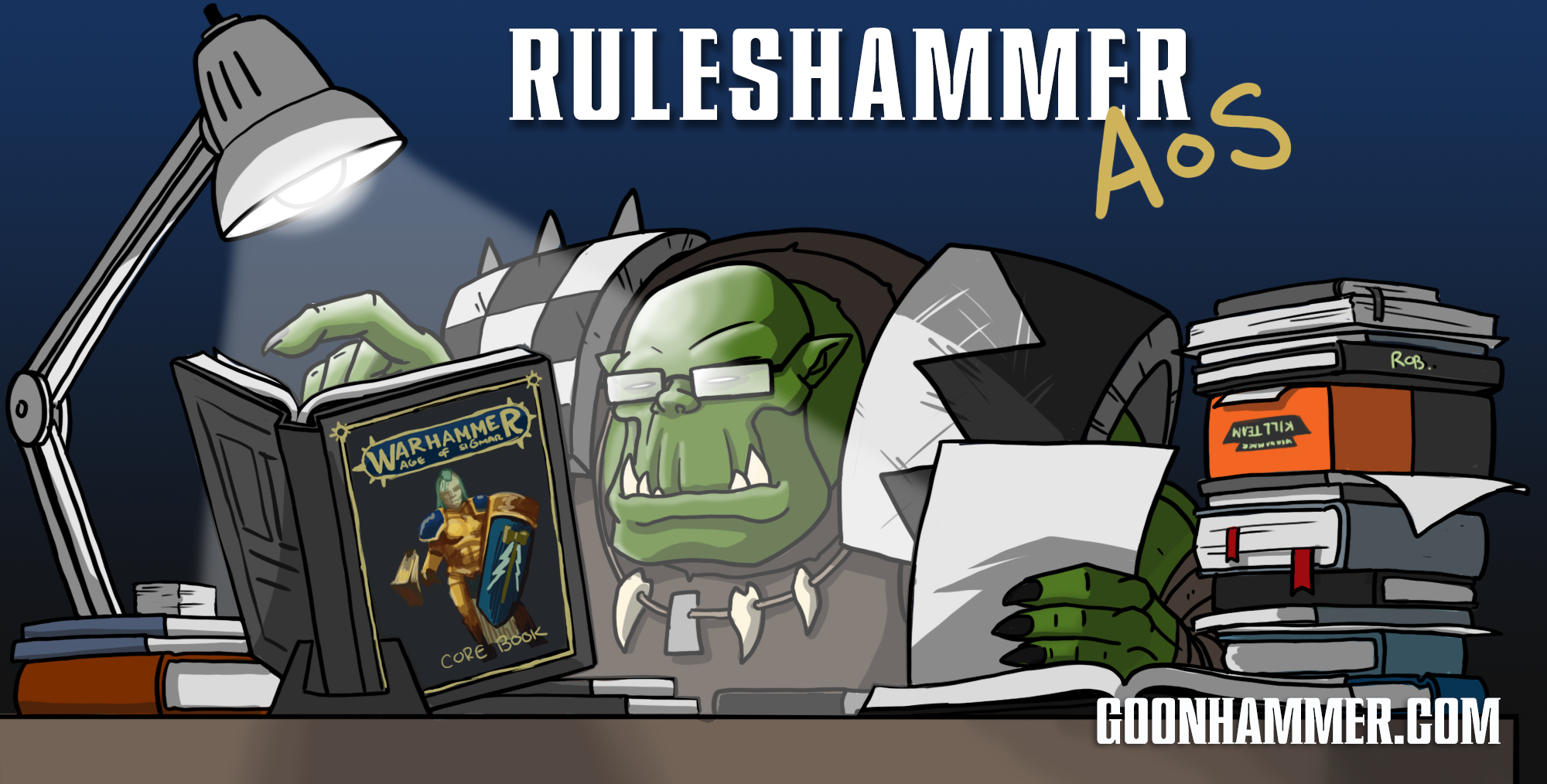The new edition of Age of Sigmar is here and we’re doing daily deep dives into the ways the edition’s rules have changed and what those changes mean for players. Today Ruleshammer will be covering a grab-bag of phases, covering the Charge, Combat and Battleshock phases. We will be covering Coherency as well as Unleash Hell in more depth in separate articles. There are some more subtle changes here than in other

Charge Phase
This phase is mostly familiar and yet wholly new with the advent of the Unleash Hell command ability, so the particular impact of Unleash Hell will be covered in greater detail in a later Ruleshammer article.
That said, let’s summarise the charge phase:
- Unless otherwise noted, a unit cannot attempt a charge if it ran or retreated earlier in the turn or is within 3” of an enemy unit.
- A unit is eligible to charge if it is within 12” of an enemy unit.
- To charge, a charge roll is made on 2D6, with the result being the distance each model can cover during the charge move.
- The first model to be moved as part of the charge must end their move within at least ½” of an enemy unit, if this is not possible the charge fails and no models move.
Note that due to the new coherency rules, you will want to take particular care to ensure units of 6 or more models remain within 1” range of at least two other models from the unit! Spreading out a unit’s front is almost muscle memory when performing a charge at this point for many players, but comes with significant consequences in third edition.
Charge Phase Command Abilities
Forward to Victory
You can use this command ability after you make a charge roll for a friendly unit. That unit must receive the command. You can re-roll the charge roll for that unit.
It’s the same as it’s ever been, but now a deep striking unit with a champion can issue the command to itself which is a nice quality of life upgrade for vanguard style units that range ahead.
Unleash Hell
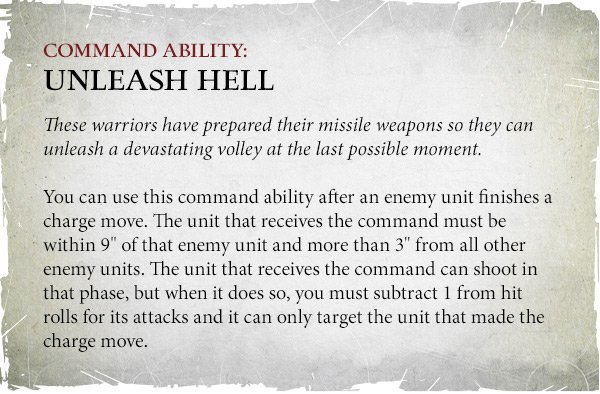
As mentioned before, we will cover the mechanics of Unleash Hell in it’s own article, but it’s important simply to note that charging enemy units that are themselves ranged, or near ranged units could now come with a potentially deadly response.
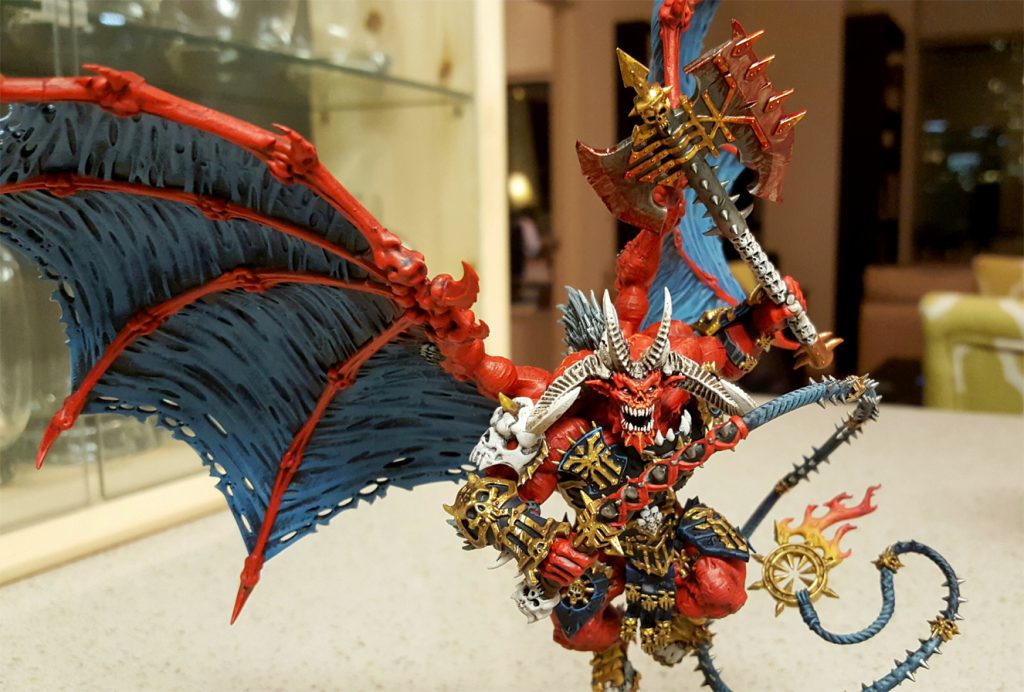
Monster Abilities
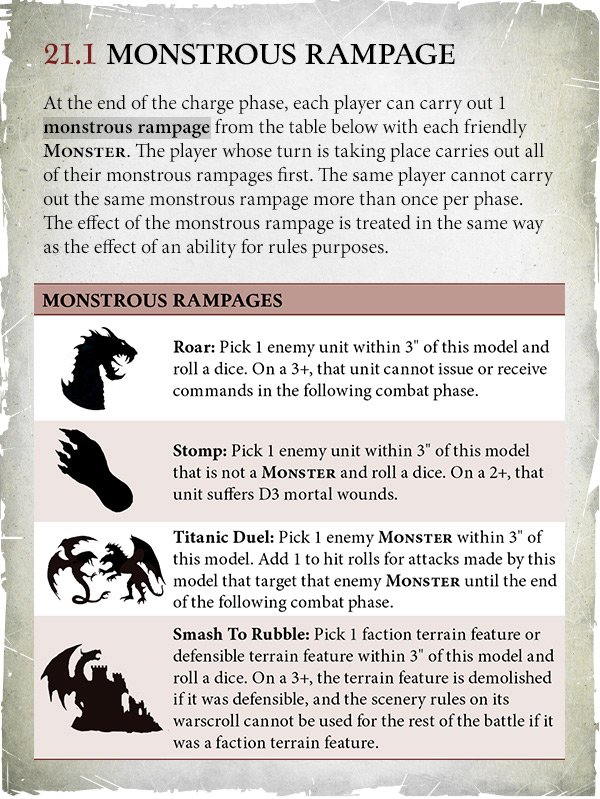
One of the most hyped new parts of Age of Sigmar 3.0 has been the Monstrous Rampages. Monsters previously didn’t do a whole lot in AoS. It was a keyword, and some mission types or unit abilities used that keyword but on it’s own it didn’t do a whole lot other than usually having more health, and a stat block that degraded as they took damage. Now, all MONSTER creatures get access to 4 abilities that all of them can use. You can use each one once per turn (per monster), even if its not your turn. There’s a decent spread of combat abilities and utility powers here. You can get D3 mortal wounds on some squishies, or +1 to hit against another Monster. Blocking command abilities can be exceedingly powerful for armies that rely heavily on them (especially now that the ability to use them is at a premium) and Smash to Rubble will make any army that has a terrain piece think twice about placing it, rather than just dropping it in the center, closest to the objective.
Combat Phase
Nothing significant has changed about the structure of combat itself, but several mechanics have been tidied up to make sequencing of abilities a lot more intuitive and straightforward, without the need of several FAQ documents (thanks activation wars…).
Strike-First and Strike-Last effects
So in order to reconcile the huge variety of contradicting effects now implemented into the game since Age of Sigmar saw it’s 2nd edition, the resolution and effect of these effects has been brought together and structured in a clear, concise and easy to follow manner in section 12.4:

This is perhaps one of the best examples of this edition’s efforts to avoid ambiguity through clear wording.
Basic Sequence
Basically unchanged – players alternate picking a unit to fight (and piling in to do so), or passing if they have no units ineligible to fight. Attacks are resolved in the same manner as in the shooting phase, and a unit may only pile in and attack if it is within 3” of an enemy unit, or made a successful charge earlier in the turn. That said, piling in has seen a significant change.
Pile In
Rule 12.2 is so small you might be forgiven for not noticing, but through a subtle tweak of the wording, the entire combat phase shifts entirely. Whereas in 2nd edition models that piled in had to remain at least as close to the closest enemy model than it was at the start of the move, in 3rd edition it only has to remain at least as close to the closest enemy unit. What this means in practice is that the ability to side step around a unit is much easier, and that it’s much much harder to lock a model in place as a result. Add on to that the added complexity of coherency in 3rd edition and this topic warrants discussion in a separate article to come.
Attack Command Abilities
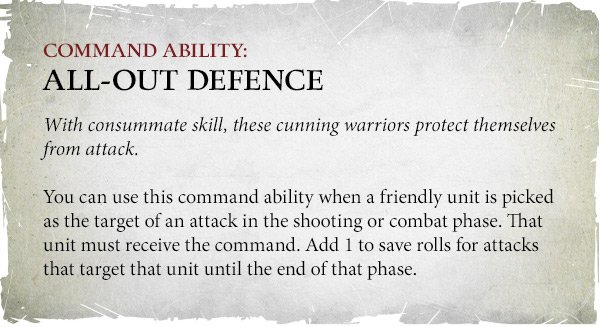
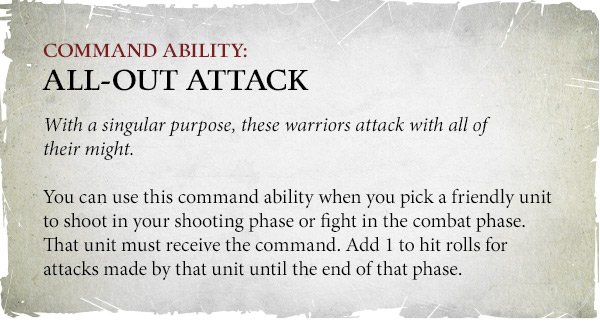
Usable whenever a unit attacks or is attacked in the combat or shooting phase, All-out Attack and All-out Defence have seen a facelift, not just in their usage but in their effects.
What was in 2nd edition a reroll effect is now a +1 effect, which is significantly stronger in many cases and has the pleasant side-effect of speeding up the sequence of play by removing excessive extra steps in the attack sequence. The soft cap on these effects means that in some cases its *worse* (i.e. your unit already benefits from +1 to hit so reroll 1’s would have been more valuable), but I think ultimately it’s a net good not just for players, but for the speed of play itself. What’s also worth noting is that they don’t need to be declared at the beginning of the combat phase anymore, which was a common pitfall that newer players fell into and can still catch the best of us out.
Wounds
Not too much has changed here, except that yet another mechanic has been established as a core rule (Ward Saves) and that returning Slain models has been adjusted to remove a sneaky trick.
Ward Saves
A rule once known in the world-that-was, ward saves refer to after save effects that allow you to roll a dice to negate a wound that has been allocated to the model. Up to 1 ward roll can be made for each wound or mortal wound before it is allocated to the model in question.
What’s interesting here is that it specifies the model in question – it’s not quite clear from the text how this interacts with the various bodyguard mechanics found throughout the game – Is it possible to make a save for a unit, take a ward save to negate the wound allocated to it, and then roll a dice to allocate it instead to a nearby bodyguard who in term may have the opportunity to roll a ward save? We suspect that this will need to be resolved by an FAQ, but overall it’s a significantly better situation than in 2nd edition, which got more complicated as more FAQs were released.
Returning Slain Models
An often ignored rule that players of Death or Tzeentch armies be, returning models used to be able to be placed within 1” of a model from the unit (including models replaced earlier that phase).. Now they must be placed within 1” of a model from the unit that wasn’t slain. Basically means no more stringing out slain models to get free movement and other shenanigans.
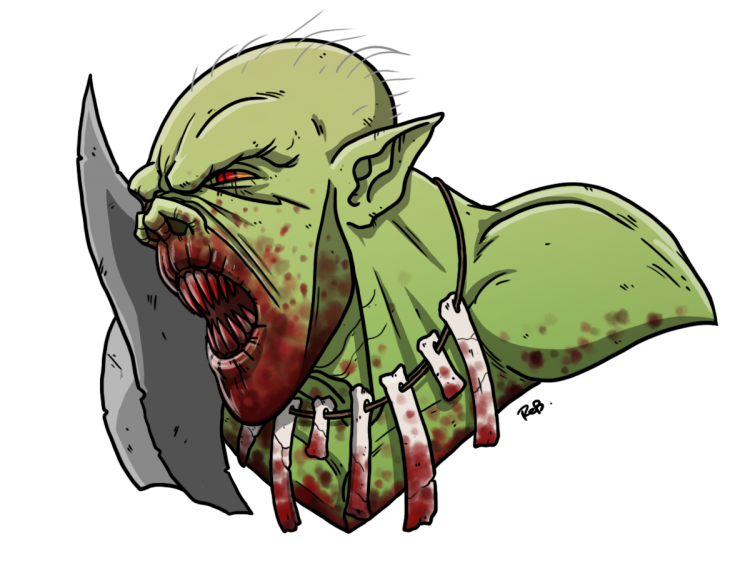
Battleshock Phase
Remarkably almost entirely unchanged except for two big ones, Inspiring Presence is obviously now more widely usable due to the change to how commands can be issued, but restricted in the sense that it’s now only usable once a phase. In the end it’s a net positive for flanking units that now don’t need an emotional support hero, but means that far more battleshock tests will be taken – which is probably a good thing. This also means the value of battleshock immune abilities has gone up significantly.
One other important point is that in previous editions, you gained +1 to bravery for purposes of battleshock for every 10 models, to offset the hit that losing lots of models in a horde comes with. This isn’t the case anymore, which is pretty rough even with the largely smaller unit sizes.
That’s a wrap for the phases. Tomorrow we’ll look back at the controversial new coherency rules and how to best make use of them. See you then! If you have any questions or comments, leave a message below or email us at contact@goonhammer.com.
